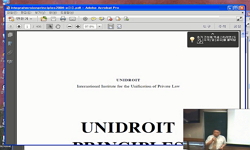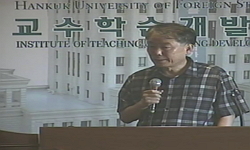Trade facilitation’ means, through “the simplification and harmonization ofinternational trade procedures” and with increase of transparency of the procedures,securing smooth and efficient flow or to reduce trade procedure barriers (TPBs) ininte...
http://chineseinput.net/에서 pinyin(병음)방식으로 중국어를 변환할 수 있습니다.
변환된 중국어를 복사하여 사용하시면 됩니다.
- 中文 을 입력하시려면 zhongwen을 입력하시고 space를누르시면됩니다.
- 北京 을 입력하시려면 beijing을 입력하시고 space를 누르시면 됩니다.

WTO 「무역원활화협정」의 내용과 향후 이행과제 = The Contents of The Agreement on Trade Facilitation and Future Implementation Issues
한글로보기https://www.riss.kr/link?id=A100111348
- 저자
- 발행기관
- 학술지명
- 권호사항
-
발행연도
2014
-
작성언어
-
-
주제어
무역원활화 ; 무역원활화협정 ; 세계무역기구 ; 도하개발어젠다 ; 싱글윈도우 ; Trade Facilitation ; Agreement on Trade Facilitation ; WTO ; DDA ; Single Window
-
KDC
300
-
등재정보
KCI등재
-
자료형태
학술저널
-
수록면
573-602(30쪽)
-
KCI 피인용횟수
6
- DOI식별코드
- 제공처
- 소장기관
-
0
상세조회 -
0
다운로드
부가정보
다국어 초록 (Multilingual Abstract)
Trade facilitation’ means, through “the simplification and harmonization ofinternational trade procedures” and with increase of transparency of the procedures,securing smooth and efficient flow or to reduce trade procedure barriers (TPBs) ininternational trade. The Agreement on Trade Facilitation was adopted at the 9th WTO MinisterialConference as part of “Bali Package” in December, 2013. The new agreement, which wasincorporated to the WTO, a powerful enforcement organization with dispute settlementsystem, is expected to boost the world economy more than one billion dollars by tradeexpansion as well as reducing trade procedure costs. The Agreement promotes the transparency in trade procedure by establishing specificduties of Member States about the declaration and availability of important information,information notice, chance of comment and consulting service, advance ruling, and theprocedures of appealing and review. Also, the Agreement contributes to increaserationality and efficiency in customs clearance and release procedure, with providing theprinciple limits the size of fees and charges to the approximate cost of the servicesrendered, and by clarifying obligations of Member States on allowance of pre-arrivalprocessing, instalment of electronic payment, separation of release from final determination of customs duties, risk management, post-clearance audit, introduction ofauthorized operators, special handling for expedited shipments, etc. The Agreement demands minimizing and simplifying documents and processes of theimport/export customs in standardized forms, and tolerates to submit copies whengovernment authorities already have the original documents. This Agreement introducessingle window system, which allows one time submission of related customs documentsto a single counter, and bans pre shipment inspection to evaluate customs tariff and rate. The Agreement prohibited mandatory use of customs broker too. The Agreement specifies the freedom of transit in GATT Article V by encouragingMember States to abolish voluntary restrictions on transit, prohibiting Member Statesnew charges that are additional to those administrative limited to the cost of providingthe transit service, requiring Member States to allow advance filing and processing oftransit documents, and ensuring formalities and documentation requirements on trafficin transit to identify the goods and to ensure fulfillment of transit requirements. Also,this Agreement provides the cooperation system of customs office, which allows MemberStates to respect the confidentiality of information as well as to share the information todevelop systematic cooperation and voluntary compliance systems. Such voluntarycompliance systems would allow importers to self-correct without penalty, whileintroduce stronger measures for non-compliant traders. To secure authentically the expected economic effect through Trade facilitation, theexertion from both of WTO and each member state are necessary. The WTO should seekfor concrete ways to develop simplification, harmonization and increase transparency intrade procedures including the suggestion of practical model documents for theAgreement or standard forms for electronic documents. Also, the WTO shouldcontinuously remove the obstacles against trade flow in the areas other than theAgreement on Trade Facilitation. For example the WTO needs to complete the negationon harmonized rules of origin. Republic of Korea is one of the countries in Category A, which is designated forimplementation upon entry into force of the Agreement, is expected to play a leadingrole in substantial application of the Agreement. To apply and implement the Agreementdomestically, Korea needs to revise or establish related rules and systems for institutionof national committee of Trade Facilitation, escalation system for inquiry, the procedures of appealing and review, and integrated framework for border administrative agencies. The existing FTAs, of which Korea is one of the parties, needs to be improved in a wayof the Agreement on Trade Facilitation plus. Using outstanding information technology, Korea is expected to play a leading role indevelopment, standardization, and international distribution of the systems forimplementation of the Agreement. Especially Korea should accelerate the negotiationsand developments to share harmonized infrastructure systems and programs with maintrade partners like China, U.S.A., the EU, and Japan. It is necessary to distribute activelythe infrastructure systems and programs, which were developed or initiated by Korea,to the developing countries by the way of technical support and capacity building. AlsoKorea may support the developing countries to build infrastructures for electroniccustoms clearance systems and programs, and to support Internet base information andcommunication system as ODA to the countries.
참고문헌 (Reference)
1 김홍률, "동아시아 경제통합" 서울경제경영 2009
2 Dierk Herzer, "What does export diversification do for growth? An econometric analysis" 38 (38): 2006
3 Zviad V. Guruli, "What Is the Best Forum for Promoting Trade Facilitation?" 21 (21): 2002
4 안경애, "WTO 무역원활화의 경제적 효과분석 : G20국가를 중심으로" 한국유통경영학회 16 (16): 33-42, 2013
5 Chris Milner, "Trade facilitation in developing countries" Centre for Research in Economic Development and International Trade 2008
6 Maria Persson, "Trade facilitation and the extensive margin" 22 (22): 2013
7 Nora Neufeld, "Trade Facilitation Provisions in Regional Trade Agreements Traits and Trends" WTO 2014
8 S. Matsuda, "The Time Release Study as a performance measurement tool for a supply chain and an international corridor" 6 (6): 2011
9 UNCTAD, "Non-Tariff Measures to Trade: Economic and Policy Issues for Developing Countries"
10 Richard Thompson Ainsworth, "IT-APAS: Harmonizing Inconsistent Transfer Pricing Rules in Income Tax - Customs – VAT" 34 : 2007
1 김홍률, "동아시아 경제통합" 서울경제경영 2009
2 Dierk Herzer, "What does export diversification do for growth? An econometric analysis" 38 (38): 2006
3 Zviad V. Guruli, "What Is the Best Forum for Promoting Trade Facilitation?" 21 (21): 2002
4 안경애, "WTO 무역원활화의 경제적 효과분석 : G20국가를 중심으로" 한국유통경영학회 16 (16): 33-42, 2013
5 Chris Milner, "Trade facilitation in developing countries" Centre for Research in Economic Development and International Trade 2008
6 Maria Persson, "Trade facilitation and the extensive margin" 22 (22): 2013
7 Nora Neufeld, "Trade Facilitation Provisions in Regional Trade Agreements Traits and Trends" WTO 2014
8 S. Matsuda, "The Time Release Study as a performance measurement tool for a supply chain and an international corridor" 6 (6): 2011
9 UNCTAD, "Non-Tariff Measures to Trade: Economic and Policy Issues for Developing Countries"
10 Richard Thompson Ainsworth, "IT-APAS: Harmonizing Inconsistent Transfer Pricing Rules in Income Tax - Customs – VAT" 34 : 2007
동일학술지(권/호) 다른 논문
-
소송능력(訴訟能力)에서의 「능력」개념의 재검토를 위한시론
- 홍익대학교 법학연구소
- 박태신 ( Tae Shin Park )
- 2014
- KCI등재
-
판례에 나타난 부동산 명의수탁자의 처분행위에대한 형사책임의 법리
- 홍익대학교 법학연구소
- 조현욱 ( Hyun Wook Cho )
- 2014
- KCI등재
-
- 홍익대학교 법학연구소
- 강우예 ( Wu Ye Kang )
- 2014
- KCI등재
-
미국에서 조세범죄에 대한 조사와 수사 -미국 국세청(Internal Revenue Service)의 역할과 기능을 중심으로-
- 홍익대학교 법학연구소
- 지유미 ( Yu Mi Jee )
- 2014
- KCI등재
분석정보
인용정보 인용지수 설명보기
학술지 이력
| 연월일 | 이력구분 | 이력상세 | 등재구분 |
|---|---|---|---|
| 2027 | 평가예정 | 재인증평가 신청대상 (재인증) | |
| 2021-01-01 | 평가 | 등재학술지 유지 (재인증) |  |
| 2018-01-01 | 평가 | 등재학술지 유지 (등재유지) |  |
| 2015-01-01 | 평가 | 등재학술지 유지 (등재유지) |  |
| 2014-10-27 | 학술지명변경 | 외국어명 : 미등록 -> Journal of hongik law review |  |
| 2011-01-01 | 평가 | 등재학술지 선정 (등재후보2차) |  |
| 2010-01-01 | 평가 | 등재후보 1차 PASS (등재후보1차) |  |
| 2008-01-01 | 평가 | 등재후보학술지 선정 (신규평가) |  |
학술지 인용정보
| 기준연도 | WOS-KCI 통합IF(2년) | KCIF(2년) | KCIF(3년) |
|---|---|---|---|
| 2016 | 0.59 | 0.59 | 0.61 |
| KCIF(4년) | KCIF(5년) | 중심성지수(3년) | 즉시성지수 |
| 0.6 | 0.59 | 0.693 | 0.42 |





 KCI
KCI KISS
KISS





